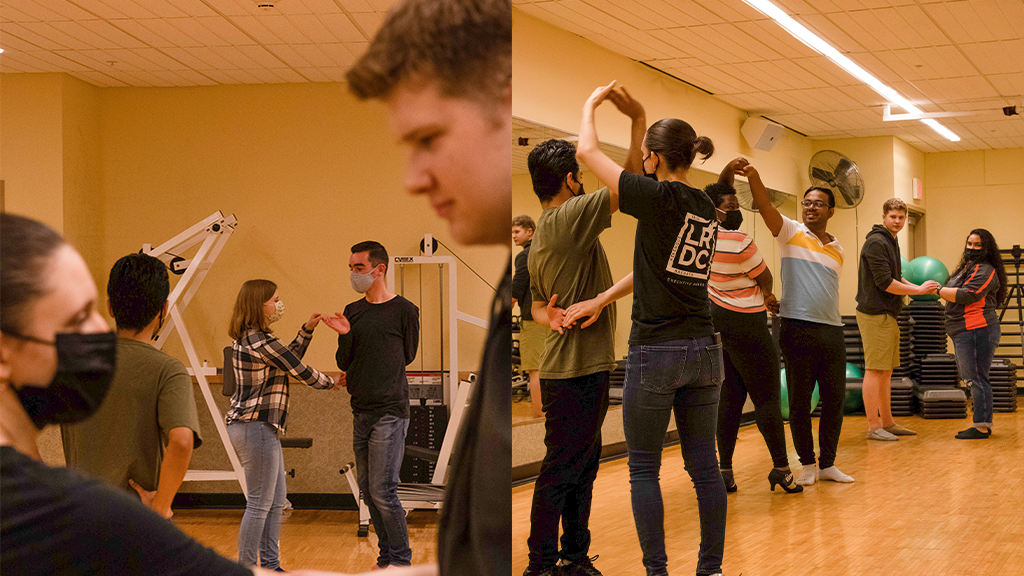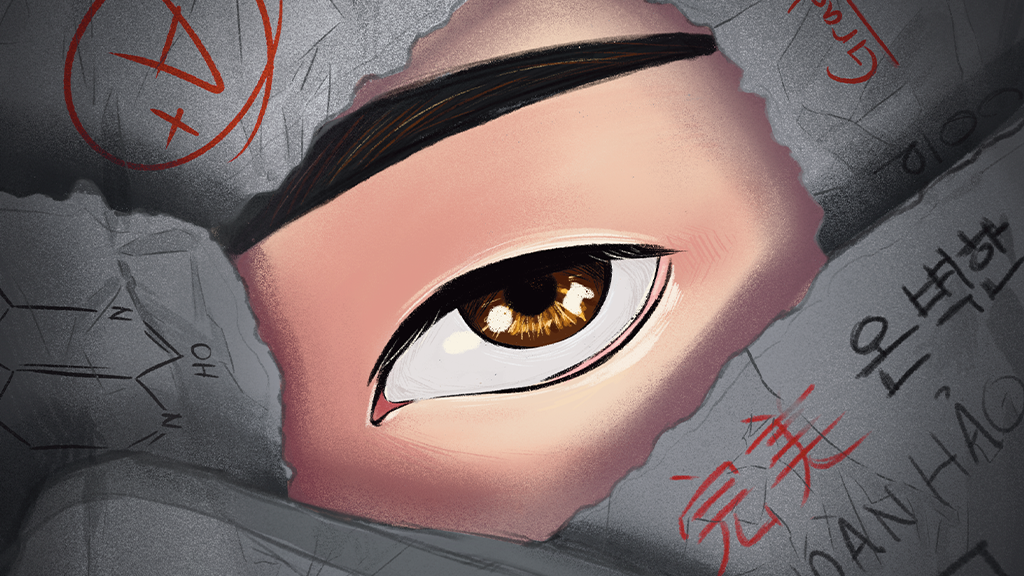“Accentuate the diagonal walking,” dance captain Viktoria Koscinski stressed. “Steps before style … always always always!”
These are some of the fun notes that can be heard while dancing the Salsa at RIT’s Latin Rhythm Dance Club.
Established in 2012, this club welcomes students from all backgrounds and levels of experience to learn a variety of Latin dance styles. These include the Salsa, Bachata and Merengue just to name a few.
A Dance for Everyone
RIT’s Latin Rhythm Dance Club meets Mondays and Thursdays at the BetterMe Wellness studio in Global Village at 8:00 pm, with the performance team practicing on Mondays and general meetings held on Thursdays.
General club meetings focus on the fundamentals. This includes lessons on the culture of where the dance originated from and the movements associated with it. The performance team focuses on technique within the style of dance while preparing for various performances on campus and in the Rochester area.
While the team includes dedicated dancers looking to perform, the level of experience within the club varies and anyone is welcome attend a team practice. Whether to watch, or even try out, everyone has the opportunity to experience the fun and flare of performing Latin dances.
Carlos Gutierrez, a second-year Ph.D. student in the College of Engineering, is the co-coordinator of Dance Instruction for RIT’s Latin Rhythm Dance club.
“It’s here to spread Latin dance culture,” Gutierrez explained. “Some people have lots [of experience] and some people don’t have any.”
“It’s here to spread Latin dance culture … some people have lots [of experience] and some people don’t have any.”
Gutierrez likes to start off with a difficult dance, such as Salsa. They do this so that the next dance students learn will be much easier, which is a confidence booster for those who may not be as experienced.
“Many of the teammates don’t have much experience,” he stated. “I like seeing their progress because it makes me happy to be their instructor.”
Community Collaboration
While the Latin Rhythm Dance club focuses primarily on variations of Latin dance, collaboration with some of the other dance clubs on campus creates opportunities for more community involvement, and opportunities to developdifferent areas of technical skill.
Clubs such as Irish Roar, the Irish Step Team on campus, will be asked to come to some of the general meetings to help teach different styles of dance.
While Irish Step and Latin Dance are two very different genres and cultures, learning a new type of dance can help students learn how to move their bodies. This is very important in dances like Salsa, which is all about sharp, yet fluid, movements.
The different dance groups at RIT can be seen performing at various times throughout the year,
Though the Ballroom Dance club typically focuses on competition, all of the dance groups have the chance to compete for “RIT’s best dance crew” every Spring. Latin Rhythm Dance club has made it to second place overall and they are confident that first place is in reach.
Captivating Connections
An important factor of Latin dancing is the connections between not only leader and follower, but the dancers and their audience as well.
While observing the performance team practice Salsa, one of the things that elevates the performance is eye contact. The choreography implements times for the dancers to look at each other and the audience, creating a striking connection with the audience to draw them in.
Alejandro Salazar, a fifth-year Computer Engineering major, has been on and off of the Latin Dance performance team for the past three years. One of his favorite parts of Latin Dance is the connection formed by non-verbal communication.
“For me, it’s the communication you have without talking,” Salazar said.
Making eye contact with other dancers and the audience is just one example of this non-verbal communication.. Even the way the leader and follower’s individual parts create synchronous movement.
Team captain for the 2021-2022 year, Viktoria Koscinski, focused on this aspect of dance while teaching Salsa.
“Make sure you’re spinning into your partner,” Koscinski noted. “It ruins the connection when it’s not.”
By spinning towards your partner instead of away from them, dancers highlight the partner relationship in the dance. This shows a strong, synchronous connection and creates a powerful performance.
In addition to creating a powerful connection between partners in salsa, the dance circles around the sharp movements and tension you create when you dance. The difference between contact and no contact is important and essential when creating certain sequences.
“It has to be powerful, but small … like a tight rubber band,” she stated. “You’re not physically moving a lot, but you’re building pressure.”
With this, the dance results in a strong performance of precise movements with a stylistic flare.
Style and Flare
Style is a huge factor in Latin Dance, which provides dancers the opportunity to add in their own level of creativity and personality into the performance.
Angela Rysak, a fifth-year mechanical engineering student, discuss how this was one of her favorite parts of this style of dance.
“Everyone has their own style,” Rysak said. “Everyone add their own bit to it [so] you learn different perspectives.”
“Everyone has their own style … everyone add their own bit to it [so] you learn different perspectives.”
Whether rigid or soft, sharp or fluid, there is so much freedom that can be incorporated into Latin Dance. Once you’ve got the basic moves down, the style is up to the performer.
All in all, the Latin Rhythm Dance Club is a perfect way to try out a new style of dance that is fun, explosive and contagious to watch. The amount of fun radiating from the performers, both while dancing and during the practices, makes you want to get up and join them!







